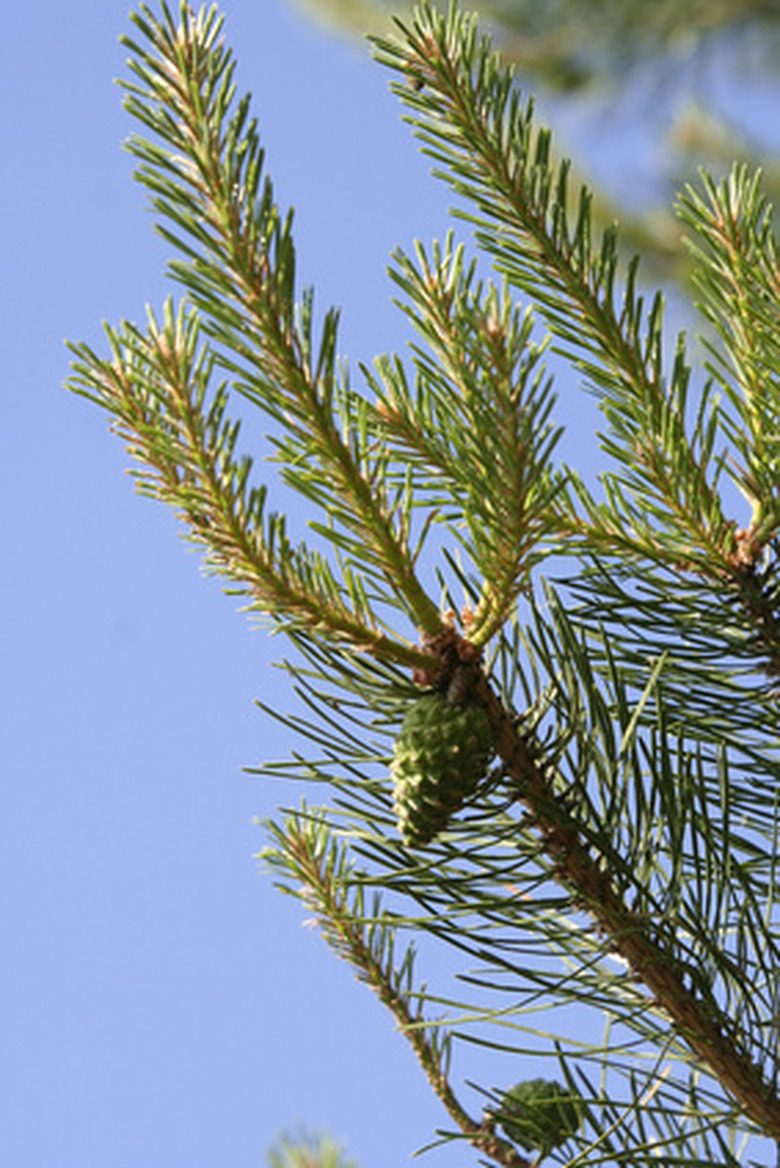The Best Time To Prune Cedar Trees
Cedar trees are a variety of evergreen tree that require less pruning than deciduous trees. Pruning cedar trees consists mainly of removing dead, damaged or diseased wood. Regular and corrective pruning also helps the cedar retain its natural form and well-being.
Time Frame
The best time to prune cedar trees is in late winter to early spring before new growth begins and the threat of frost has passed. Always avoid pruning evergreens like cedars in late summer to early fall, as this can stimulate new growth that may be damaged by cold weather.
Considerations
Make pruning cuts that are outside the collar branch at a 45- to 60-degree angle and down to the branch bark ridge. Leaving the branch collar intact on the cedar tree helps to ensure decay does not enter the trunk. Disease- or insect-infected pruning wounds should be painted with a rubbing alcohol to prevent infection.
- Cedar trees are a variety of evergreen tree that require less pruning than deciduous trees.
- Leaving the branch collar intact on the cedar tree helps to ensure decay does not enter the trunk.
Reasons
There are many important reasons for pruning cedar trees, including maintaining the trees' overall health and structure of the trees. Cedar trees have a moderate growth rate, so maintaining a regular pruning ensures the tree does not become overgrown.
Prune Cedar Trees In Hot Weather?
Cedars are random-branched conifers as opposed to firs, pines and spruces, whose branches grow in whorls. Whether it is a hot or cold day is irrelevant. Do not prune in late summer or early autumn because pruning can stimulate new growth that will not have time to turn hard before freezing autumn or winter weather. If the branches of your cedar are broken by storm or accident, prune it immediately; never mind the time of year. Select a cedar that fits your space. The deodar cedar (Cedrus deodara), known for its drooping branches, grows in U.S. Department of Agriculture plant hardiness zones 7 to 9. While the deodar cedar can grow up to 150 feet tall, the cultivar "Pendula" (Cedrus deodora "Pendula") only grows 10 feet high. It will grow in USDA zones 6 to 9.
- There are many important reasons for pruning cedar trees, including maintaining the trees' overall health and structure of the trees.
- If the branches of your cedar are broken by storm or accident, prune it immediately; never mind the time of year.
References
- Virginia Cooperative Extension: A Guide to Successful Pruning, Pruning Evergreen Trees
- University of Idaho Cooperative Extension: How to Prune Coniferous Evergreen Trees
- Virginia Cooperative Extension: A Guide to Successful Pruning -– Pruning Evergreen Trees
- Clemson Cooperative Extension: Pruning Trees
- North Carolina State University Extension: Thuja Plicata
- Floridata: Cedrus Deodara
- North Carolina State University Cooperative Extension: Cedrus Atlantica
